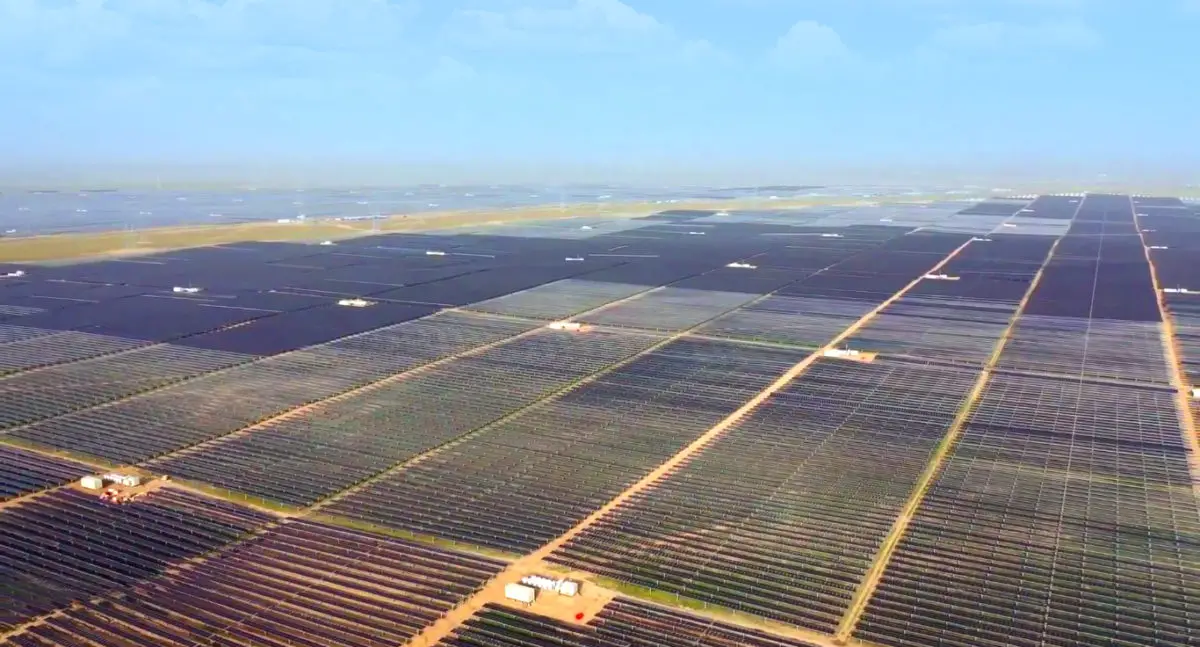Huanghe Hydropower Development, a utility owned by the state of China has completed the construction of the Largest solar plant in China in the desert of the country’s northwest province of Qinghai. The plant, which has a capacity of 2.2 GW was constructed in 5 phases. Inverters for the plant were supplied to the plant by Sungrow, a Chinese owned inverter manufacturer and the whole utility cost an estimated US$2.2 billion. The company announced the storage system as a solar+storage project in mid-May, but at the time it did not reveal that it was to be connected to a giant solar plant. The project was built with monocrystalline bifacial modules, supplied by an unnamed manufacturer, and 900 MW of Sungrow’s SG250HX 1,500 V string inverters.
Also Read: China develops 202.8 MW/MWh solar-plus-storage project in Qinghai
Alongside the massive 2.2 GW solar PV park in China, there’s a 202.86 MW/202.86 MWh energy storage plant. Getting all of that electricity out of the Largest solar plant in China and onto the broader grid presents its own challenges, and that’s where an 800kV ultra-high voltage power line comes in. The ultra-high voltage power line in China is set to maximize the consumption of renewable energy as the solar resources deployed unevenly by region, significantly fuelling the transition to a low carbon economy for eastern China and facilitating the western economic growth.
Sungrow offers its PV and energy storage portfolio coming with an embedded sub-array energy management function that can be used to control the output of solar and storage, allowing for improved accuracy of solar generation forecasts. The flexibly-built microgrid system with Sungrow PV and energy storage system can supply the electricity in the early construction period, making it one of the fastest completed renewable energy projects with a construction duration of over 4 months. The combination of PV and energy storage can also bring additional benefits, like ensuring grid stability.

Leave a Reply